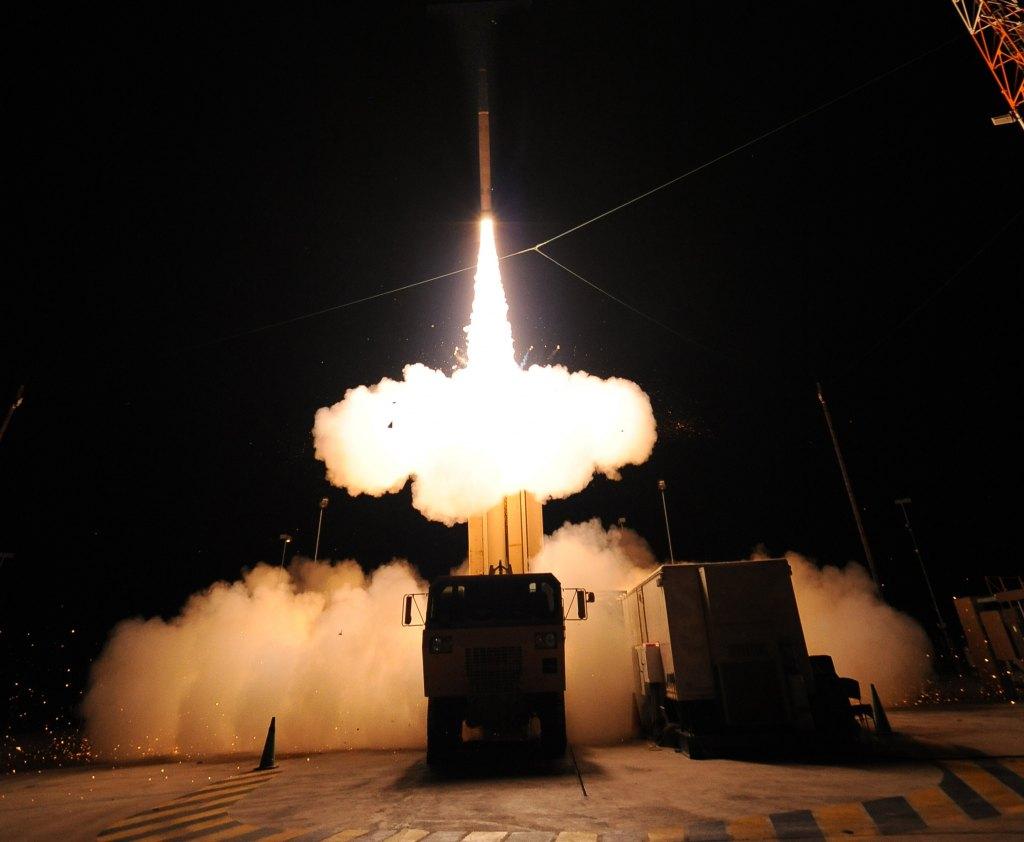Three decades after Ronald Reagan launched his “Star Wars” project, the costly missile defense program has become a pillar of US strategy despite lingering doubts about its technology.
No longer designed to counter a Soviet nuclear attack, the anti-missile network is supposed to thwart a “limited attack” from North Korea or Iran. But numerous experts question if the system even works.
While Reagan’s blueprint provoked bitter debate in the 1980s, today’s program is now firmly entrenched in Washington. The project, however, still requires a daunting technical feat — to hit a ballistic missile traveling outside the atmosphere with another missile.
Supported by advanced radar, SM-3 interceptors aboard 26 naval ships and ground-based interceptors in silos in Alaska and California are designed to collide with long-range missiles, including intercontinental ballistic missiles (ICBMs), as they speed through space.
“We do have confidence in the ability of the ballistic missile defense system to defend the United States against a limited attack from both North Korea and Iran today and in the near future,” Lieutenant General Richard Formica, commander of US Army space and missile defense command, told lawmakers this month.
The US Missile Defense Agency says the SM-3 interceptors — the same weapons used for NATO’s anti-missile shield — have scored hits in 25 of 30 tests, though ground-based interceptors have failed in their last two tests.
Neither Pyongyang nor Tehran have yet managed to develop an ICBM that can reach the United States, and some scientists dismiss the missile defense project as a technical illusion.
Despite billions of dollars in funding, there is no sign that “any of the fundamental unsolved problems associated with high-altitude ballistic missile defenses have been solved,” wrote professor George Lewis, a physicist at Cornell University and Theodore Postol, a professor at the Massachusetts Institute of Technology, in a 2010 report.
The Pentagon’s tests only offer “the appearances of success,” according to Lewis and Postol, as the trajectory, the timing of the launch and the type of missile being fired are all known in advance.
The tests are organized in “carefully orchestrated scenarios that have been designed to hide fundmamental flaws,” they wrote.
— Detecting Decoys —
The Pentagon’s testing reports in recent years acknowledged the ground based interceptors — which cost $70 million each — so far have “demonstrated a limited capability against a simple threat” due to an immature technology.
As the United States presses ahead to build new versions of the SM-3, which cost $20 million a piece, Congress’s investigative arm — the Government Accountability Office — has voiced concern over “performance delays, and in some cases, performance shortfalls.”
Skeptics of the project say adversaries could undercut the system by launching a barrage of missiles, attacking radars or simply employing decoys.
Aluminum balloons or numerous small wires could be enough to confuse the system, experts said.
“You can very easily create light decoys that will very easily fly with the warhead, just balloons for instance. And these are very hard to discriminate from the actual warhead,” physicist Yousaf Butt, of the Monterey Institute of International Studies, told AFP.
Even strong advocates of the program, including naval officers who served on missile defense ships, say decoys pose a tough challenge.
Despite mixed results and complaints from Russia that the system is undermining arms control efforts, the anti-missile weaponry has been sold to allies and enjoys widespread backing in Congress, where the defense industry has lobbied to keep the project well-funded.
Since its start in the 1980s, the program has cost at least $158 billion, according to official figures, while other estimates put the price tag higher.
A budget crisis has hardly affected the program. The Pentagon has proposed $9.2 billion for the system in 2014 and $45.7 billion over the next five years. And some senators are pushing to fund a new interceptor site on the East Coast.
But for skeptics, the system remains unproven and possibly unworkable.
According to Butt, trying to hit an incoming warhead in space is “a very difficult problem that I don’t envision being solved because it’s a physics problem, not an engineering problem.”











